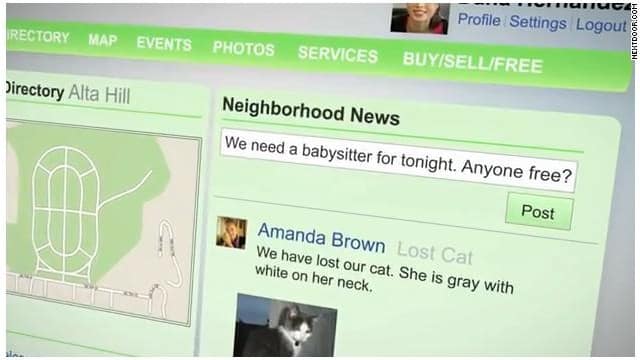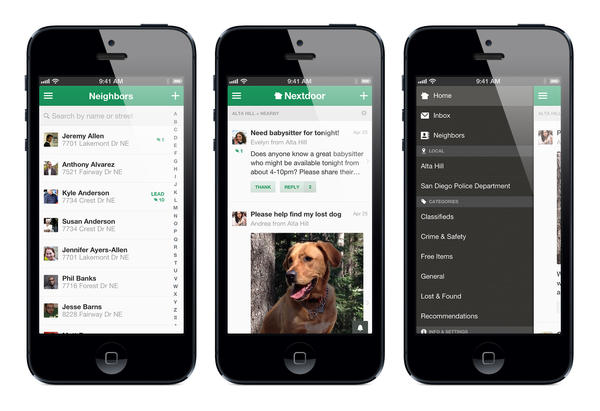Social networking has connected the world and spread ideas on a global level that have never been witnessed before. Scientists, filmmakers, entrepreneurs and even political leaders have been brought together through the World Wide Web to share concepts, ideals, innovations and policies. Even friends have the chance to reconnect with networks through Facebook, Twitter and Instagram. Now the web is growing to connect the most immediate people of all: next door neighbors.

To initiate these alterations Nextdoor raised $21.6 million dollars in funding through Feb. 2013 led by Facebook investor and Greylock’s David Sze, who wrote a whopping check for $15 million. “Every social network on Earth pitches me, and I say no to nearly every single one of them,” said Sze in an interview with Indystar.com. “I put the largest check I have ever written on the table to work with these guys. I think this could be another one of those seminal networks.” Along with Sze Google Ventures and Allen & Co. contributed to Nextdoor’s financing and brought the total capital investment in the company to $40.2 million. With so many millions in funding, a redesigned interface and dreams of international expansion, social and virtual communication may become the future of protecting and maintaining a community.
With the substantial investments and after listening to user feedback Tolia promised the next generation website would feature a greater focus on crime and safety, the ability to more effectively communicate with nearby neighborhoods and just an overall improved user experience. Users now have the capability to receive updates from their local police and fire departments to report thefts, sketchy behavior and unknown strangers. Nextdoor has formed official partnerships with over 90 public safety agencies and has definitely stressed the importance of communication for the sake of safety and crime prevention. Crime and safety threads have also been refined with enhanced Urgent Alerts to improve the speed and quality of digital communication.
Boundaries were additionally an issue amongst users as they felt restricted and hemmed by the carefully drawn grids by Nextdoor. Members on the edge of the boundary felt shutoff and isolated from neighbors only a few blocks down the road. Nextdoor 2.0 has changed this and now information can be shared with people in other neighborhoods, while maintaining levels of privacy.

Even though Nextdoor is an innovative website that promotes community, safety and crime prevention it is astonishing that neighbors need technology to communicate successfully. Nextdoor is an absurd concept that has many investors and techies questioning the potential longevity of the site. Verbal communication is slowly changing into text and instant messages as opposed to phone calls and personal meetings. But it has proven a successful form of communication especially with the growth of Facebook, Twitter and Instagram. With almost a third of Americans not knowing a single neighbor by name and the constant development of social communication technologies, the success of Nextdoor may indicate that “in person” communication is a thing of the past.
[sdonations]2[/sdonations]

